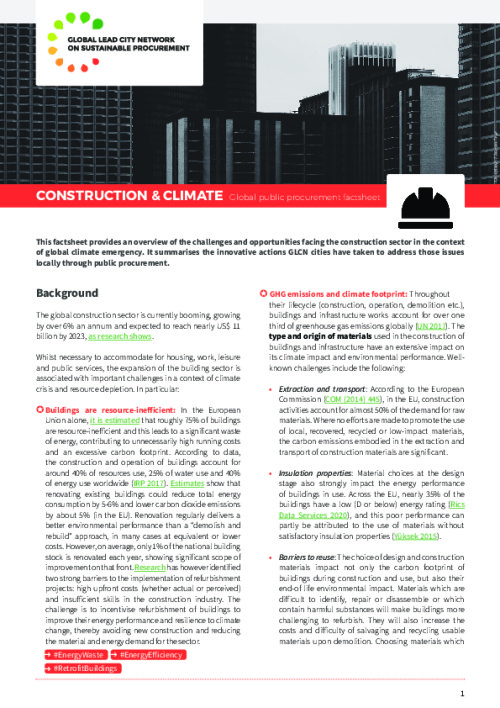Stimulating demand for circular construction skills - a guide for public authorities
The EU-funded BUS-GoCircular project aims to address and overcome the challenges of stimulating demand for a circular construction skilled workforce, along with the hands-on capacity building to increase the number of skilled professionals within the workforce across the value chain. Local and regional governments can use a wide range of policy levers to stimulate this demand.
Through good practice and replicable examples from Europe and beyond, this document aims to raise awareness among practitioners and policymakers about their ability to promote a more circular construction sector and upskill professionals. It also highlights the various levers at the disposal of local and regional governments and public administrations to support this transition.
The EU has committed to making its built environment greener in the coming years. With the introduction of the “Fit or 55” package and the proposed revision of the Energy Performance of Buildings Directive, local infrastructure and building investments are becoming increasingly driven by requirements and opportunities to apply sustainable energy technologies and circularity concepts. However, the competencies and skills needed to support a successful transition to a low-carbon and circular built environment remain a key issue that local actors are struggling to solve.
The circular economy proposes an alternative economic model, taking over from the current linear ‘take-make-waste’ economy. A circular economy seeks to extract the maximum value from resources and assets in use and keep materials in circulation for as long as possible through processes including reuse, repair, remanufacturing and recycling. Recent geopolitical events (e.g. the COVID-19 pandemic, the energy crisis, inflation, and geopolitical tensions…) have highlighted Europe’s dependency on building materials supply. Therefore, the ultimate goal of a circular economy is to establish an ecologically safe, low-carbon, resilient and just society. As the sector that extracts the most resources (50%) and emits the most CO2 (36%), the construction sector can benefit from applying circular economy principles. These principles could reduce by 50% the embodied emissions of building materials, as many EU-funded projects have shown1. To achieve this, the way that we design, construct, maintain, and reuse buildings and their materials have to change.
Applying circular economy principles to buildings can help to preserve and reduce embodied energy, support climate mitigation targets, and minimise waste. Multifunctional green roofs, façades and interior elements (the specific focus of the BUS-GoCircular project) can help to increase biodiversity in our cities, reduce the heat island effect and improve the well-being of inhabitants. Yet, to have more circular buildings, we need more workers, a greater variety of people and professions with the relevant skills to design, construct and maintain circular buildings. This document aims to promote a cicular construction sector and upskill professionals.



